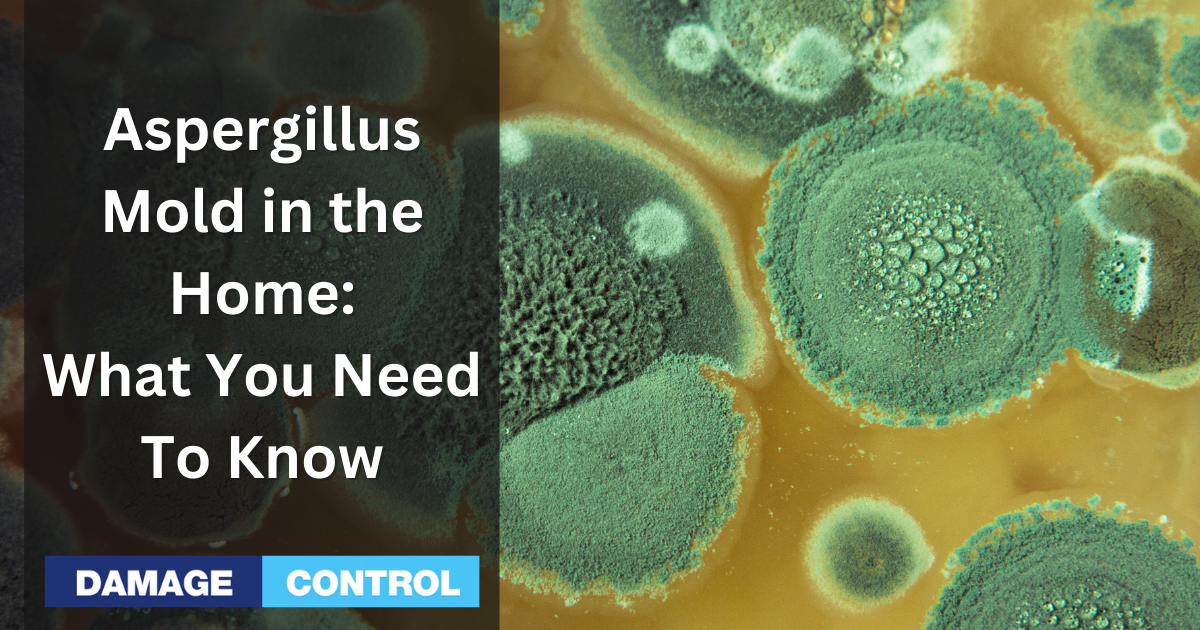What is Aspergillus Mold?
Aspergillus mold is a common type of mold found both indoors and outdoors. It was first discovered and cataloged 1729 by Italian biologist (and Priest) Pier Antonio Micheli. It is often found in compost, plants, trees, grain crops, and decaying leaves. Aspergillus does not speak to a single type of mold as it covers a genus that spans several hundred different mold species. However, it can be said that three main species are best known.
Species of Aspergillus Mold
Aspergillus Niger
This species of Aspergillus is particularly dangerous because it is the precursor to black mold growth. It is considered a spoilage organism because it most easily affects certain foods and fruits. It can send spores airborne, which is how it gets around. In some cases, it can cause pneumonia.
Aspergillus flavus
Aspergillus flavus is a pathogenic fungus that colonizes cereal grains, tree nuts, and legumes. It causes ear rot in corn mold on peanuts, and this can happen either before the harvest or afterward, depending upon exposure. It produces aflatoxin, which is a toxin that can cause hepatitis, a weakened immune system, and other p
Aspergillus Fumigatus
This particular mold is valued for its role in recycling both carbon and nitrogen. It is an airborne pathogenic fungus and among the most common to trigger illness in immunodeficiency patients.
Characteristics of Aspergillus Mold
Aspergillus mold typically has a yellow-green appearance. They spread via hyphae, which are long thread-like fibers. Their spores are typically between 200 and 400mm and cause the disease aspergillosis.
Health Risks Associated with Aspergillus Mold
Most of the mold that humans encounter is relatively harmless. However, there are numerous health risks involved with facing Aspergillus Mold.
Allergic Aspergillosis
This particular malady is known for the following symptoms:
- Coughing
- Chest Pain
- Coughing Up Blood
- Shortness of breath
Aspergilloma
An Aspergilloma is a particularly nasty thing to have to deal with. It is, in simplified terms, a ball of fungus that accumulates in your lungs. It is composed of hyphae, cellular debris, and nasty mucus. It all gathers in the lungs, hindering one's breathing ability. It can be treated, but it will typically require anti-fungal medication to get rid of it adequately. You should take note that asking your doctor for antibiotics will not combat the problem as it is a fungal-based illness, not a bacteria-based illness.
How Does Aspergillus Mold Grow in the Home?
Aspergillus is typical of most molds that are found in the home. It is found usually in damp areas that do not encounter a lot of sunlight. It can make its way into your home through numerous means, be it from a leaky roof, an open window during (for it) opportune weather, or by bringing it into your home with wet or muddy shoes.
Once it is in your home, all it needs is a source of moisture and nutrients in order to start spreading. Once it begins to spread it does not take long to develop into something more problematic.
Is Aspergillus Mold Common in Homes?
Aspergillus is quite common, both indoors and outdoors. In fact, there is a correlation because Aspergillus is so easy to transfer from outside to inside. Whether you bring it into your home by yourself or it makes its way in through other means, it can thrive anywhere there is enough moisture and nutrients to support it.
Is Aspergillus Black Mold?
Aspergillus is not exactly black mold, but it is quite similar. Black mold is its own species, Stachybotrys chartarum. It is similar to Black mold in that it thrives under the same conditions, and in some cases, Aspergillus can be a harbinger of black mold. They are both relatively common. They can even cause serious illness in humans. However, they are not the same.
Conclusion
Aspergillus is not the same as black mold, but its similarities are hard to miss. There is no point in trying to test your home for a specific type of mold, but you can be most assured that it is in your home. Fortunately, it can be gotten rid of just as easily.

